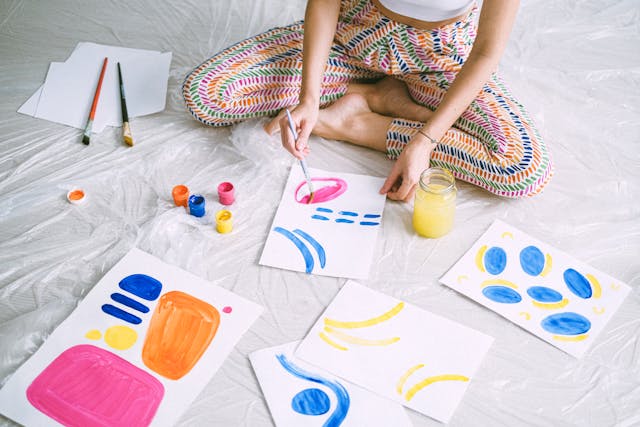Art as Therapy: The Healing Power of Creating and Viewing Art
Art isn’t just something we hang on walls or admire in museums—it’s also a powerful way to heal. Whether you’re painting, drawing, sculpting, or simply enjoying a beautiful piece of art, the creative process can ease stress, express emotions, and support mental well-being. This is the heart of art therapy: using creativity to help people feel better inside and out.

What Is Art Therapy?
Art therapy is a form of mental health treatment that uses art as a tool for self-expression. It’s guided by trained therapists who help people explore their thoughts and feelings through creative activities.
You don’t need to be an artist or know how to draw. In fact, the goal isn’t to create a masterpiece—it’s to express what’s going on inside. Art therapy is used with people of all ages, and it can be helpful for:
-
Anxiety and depression
-
Trauma and PTSD
-
Grief and loss
-
Chronic illness or pain
-
Stress and burnout
It’s also often used in schools, hospitals, and senior care centers to support emotional well-being.
The Healing Power of Creating Art
Making art gives your mind a break and offers a healthy outlet for emotions. Here's how the act of creating can help:
-
Reduces stress: Focusing on colors, shapes, and lines can calm your mind like meditation.
-
Improves mood: Creative activities boost dopamine, the brain chemical linked to pleasure.
-
Expresses emotions: Sometimes, it’s hard to put feelings into words. Art helps express what you’re going through.
-
Builds self-esteem: Finishing a creative project can give you a sense of accomplishment and pride.
-
Provides focus: Making art puts you in a “flow” state, where time fades and you’re fully present.
Even simple activities like coloring, doodling, or molding clay can make a big difference.
The Power of Looking at Art
Creating art isn’t the only way to feel better—just viewing art can also be therapeutic.
-
Looking at art can reduce anxiety and boost positive emotions.
-
Museums and galleries often have a calming, inspiring effect.
-
People connect with different works based on their own emotions, memories, or personal struggles.
-
Some hospitals display art because it helps patients heal faster and feel more comfortable.
Art allows people to see the world in new ways, reflect on their own feelings, and connect with something meaningful.
How to Try Art Therapy at Home
You don’t need special training or expensive supplies to start using art as therapy in your daily life. Here are a few ideas:
-
Keep an art journal: Draw or paint your emotions, dreams, or daily reflections.
-
Create a calming collage: Cut out images that make you feel peaceful or happy.
-
Paint your stress: Use colors and brushstrokes to show what stress feels like—and then paint what peace looks like.
-
Try mindful coloring: Adult coloring books are a great way to relax and focus.
-
Draw your feelings: Choose a color for each emotion and create a “map” of what you’re feeling.
Remember, there’s no right or wrong way to do it. It’s about the process, not the product.

When to Seek a Professional Art Therapist
While creating art on your own can be helpful, a licensed art therapist can guide you through deeper emotional work, especially if you're dealing with serious mental health issues. Art therapy sessions often include talking about your artwork and exploring what it reveals about your thoughts and feelings.
Look for a certified art therapist through a mental health clinic or professional directory if you're interested in exploring this path.
Final Thoughts
Art has a special way of reaching parts of us that words can’t. Whether you’re making a painting, viewing a sculpture, or coloring in a quiet moment, art can bring comfort, clarity, and healing. You don’t need talent—just an open mind and a willingness to explore.
So pick up a pencil, grab some paints, or simply take a moment to enjoy the beauty around you. Your mental health might thank you for it.












